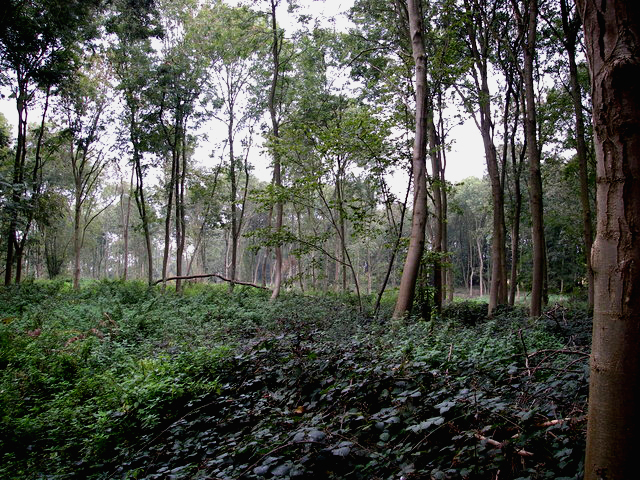
Borley wood – restoration This view shows a area from which planted exotic conifer species have just been removed to allow site native species to re-assert themselves (NVC W8 ash/maple woodland type), October 17, 2006.
A recent study “A Century of Reforestation Reduced Anthropogenic Warming in the Eastern United States” unveils a silver lining through the lens of historical reforestation efforts in the Eastern United States. Spanning over a century, these endeavors have contributed to the greening of landscapes and played a pivotal role in reducing anthropogenic warming across the region. This study revealed the significant impact of reforestation on local climate mitigation and underscores the potential of nature-based solutions in our fight against global warming.
The Cooling Effect of Reforestation
The research, conducted by a team of environmental scientists, reveals that reforestation in the Eastern U.S. has led to a noticeable cooling of both land surface and near-surface air temperatures. By analyzing ground and satellite-based observations, the study highlights a significant reduction in temperatures, with forests cooling the land surface by 1–2°C annually compared to adjacent grasslands and croplands. This cooling effect is most pronounced during the growing season’s midday, offering a natural buffer against the rising temperatures associated with climate change.
A Shift in Climate Trends
Interestingly, the study correlates the extensive reforestation efforts with the anomalous lack of warming in the Eastern U.S. throughout the 20th century. Unlike other North American regions that experienced substantial warming, the Eastern U.S. showed minor cooling trends, attributed to the biophysical impacts of reforestation. This phenomenon, often referred to as the “warming hole,” underscores the potential of strategic reforestation efforts in tempering regional climate trends.
Implications for Climate Adaptation
The findings of this study underscore reforestation’s dual benefits: sequestering carbon dioxide from the atmosphere and directly cooling the Earth’s surface. In the face of escalating climate change, reforestation emerges as a vital nature-based solution, offering a sustainable pathway for climate adaptation and mitigation. The study’s insights highlight the importance of preserving and expanding forested areas as a proactive measure against global warming.
Renewed Focus on Reforestation & Conservation
As we move forward, the study calls for a renewed focus on reforestation and forest conservation as key strategies in the global climate action agenda. By learning from the century-long reforestation efforts in the Eastern U.S., we can harness the power of nature to forge a cooler, more sustainable future for our planet.
The study provides compelling evidence of reforestation’s positive impact on climate. It serves as a call to action for policymakers, environmentalists, and communities worldwide to invest in reforestation as a practical and impactful climate solution.
